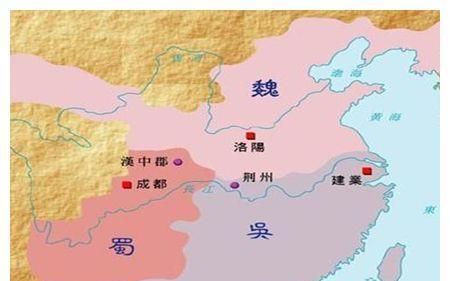At the end of the Eastern Han Dynasty, there were dozens of warlords of all sizes, and people were fighting for the city, and the war became more and more fierce, and eventually formed a three-party regime, Cao Cao's Wei State, Liu Bei's Shu Han, and Sun Quan's Wu State. These three historically famous players formed a three-legged situation, dividing one side and ensuring temporary stability.

The three kingdoms of Wei Shu and Wu all wanted to win the world, and Cao Cao took the emperor in his hand and blackmailed the son of heaven to order the princes; Liu Bei called himself a descendant of the Han royal family and wanted to restore the Han Dynasty; Sun Quan held the jade seal of the country and also wanted to be orthodox emperor. The three parties argued endlessly. But their first task is to restore the national economy and enrich its national strength. All three countries have their own strategies and approaches, and the genres are different.
In 196 AD, Cao Cao adopted the advice of the Qunchen, appointed Ren Jun as the general of the pawn farmers, recruited many farmers to cultivate the land around Xuchang, harvested more than one million crops that year, and Cao Cao, who tasted the sweetness, extended the TunTian system to various states and counties, and stipulated that the people of Tuntian could not participate in military service and be exempted from labor and leisure laws. As a result, a large number of people joined the Tuntian movement, effectively restoring the economic base of the north. In addition to Tuntian, the State of Wei also implemented another initiative, colonizing Guanzhong. At the end of the Han Dynasty, Guanzhong was reduced to ruins due to war, and more than 100,000 people fled to Jingzhou. The State of Wei recruited displaced people from all sides to return to Guanzhong, distributed cattle and land, and the Guanzhong area was successfully rebuilt. In the trade with Xianbei, a large number of war horses and jade were also exchanged, coupled with the Japanese supply to the State of Wei at that time, which occupied the most economically developed area of the economy at that time.
The State of Shu had a close relationship with the merchants before Liu Bei raised his army, the cavalry division received financial support from the large merchants Zhang Shiping and Su Shuang, and the Mi Zhu in his hands was also very rich, and later Liu Bei led a large army into Shu land, obtained a rich land, and incidentally took over a large amount of the original property of the Shu state, and the national treasury was very full. Coupled with the silk trade with the Roman Empire at that time, and the rhinoceros leather business with the southern barbarians in the northwest, a large amount of materials were obtained, and although the territory of the Shu State was the smallest, it was able to establish a state to defend the territory.
There were abundant water resources around the State of Wu, using the river to trade with the barbarian tribes, obtaining a large number of materials, and carrying out regular ocean voyages, passing through Taiwan to bring back a large number of personnel and materials, although the economy and agricultural trade in the Jiangnan area at that time did not exceed the Central Plains, but it also laid the foundation for the future.
In addition to foreign trade, during the war, the trade between the three countries did not stop, and after the reunification of the Jin Dynasty, the economic ties between the north and the south were strengthened, and the economy developed unprecedentedly.